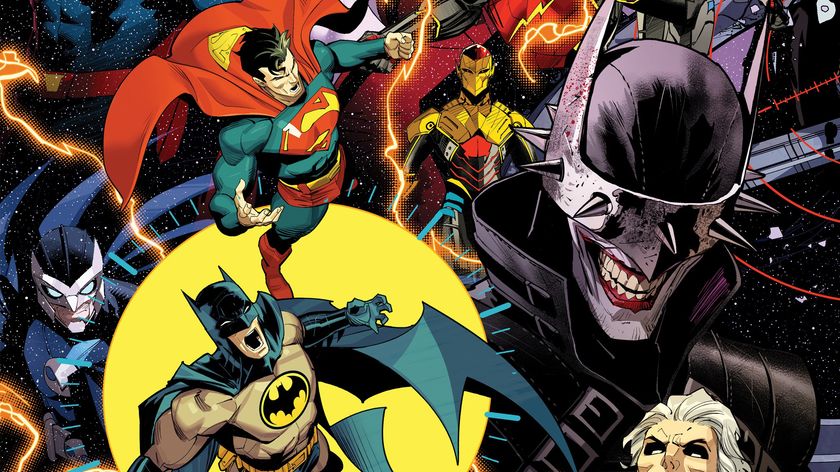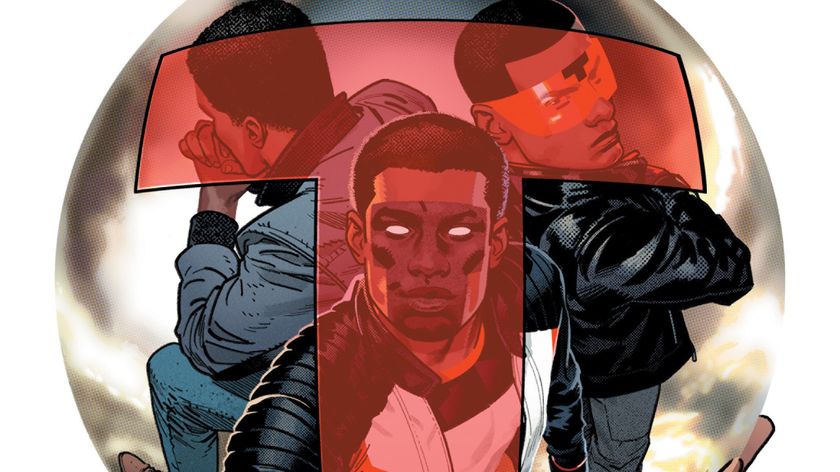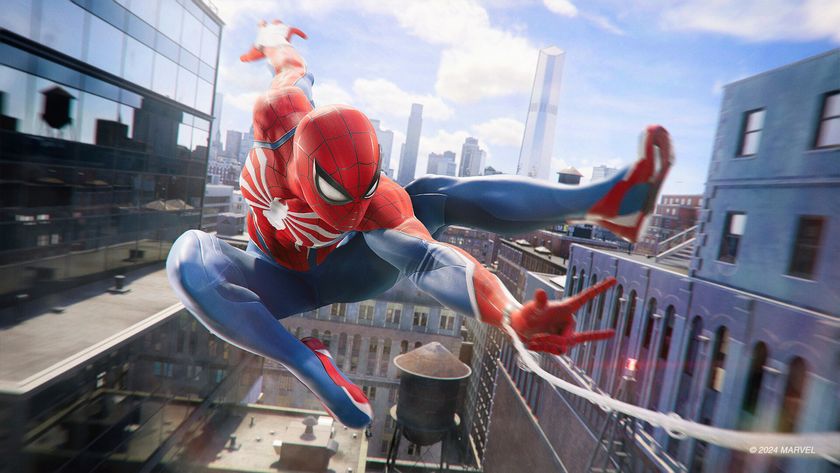White Knight: Red Hood's creators talk reinventing Jason Todd and a brand new Robin
Plus Clay McCormack & Sean Murphy tell us about an almost used fan-favorite villain
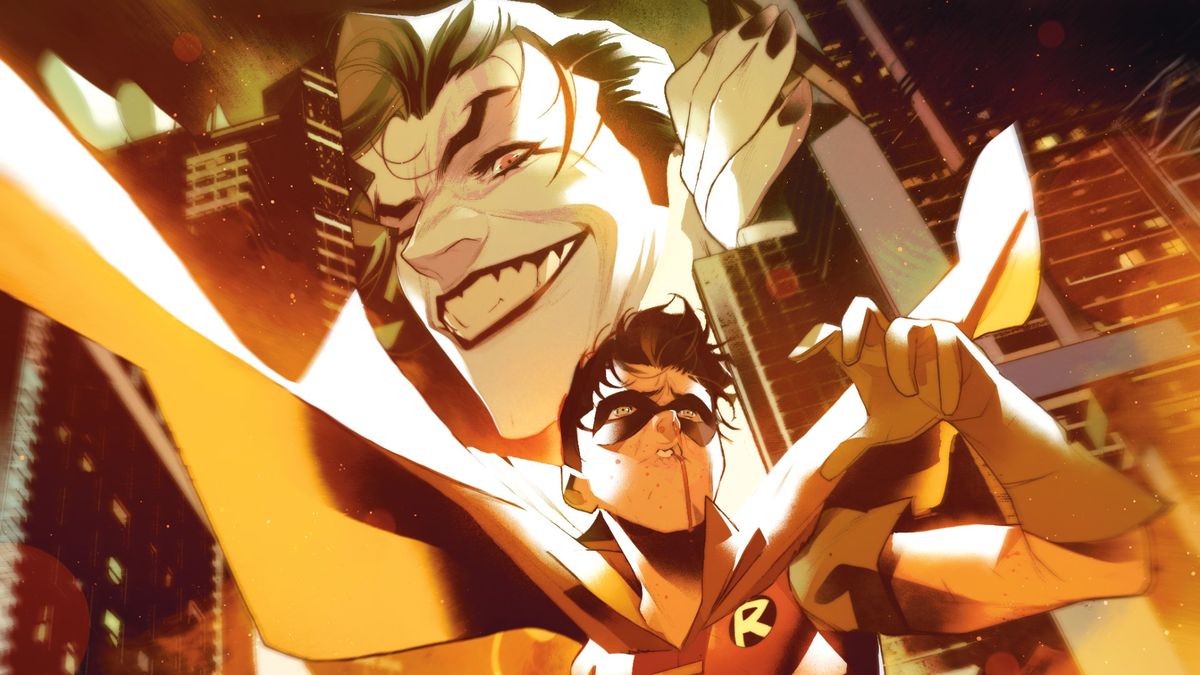
What happened to Jason Todd?
From the very beginnings of the Batman White Knight saga, created by Sean Murphy, that's been the question on readers' minds. Little hints have been given along the way but, so far, those hints only showed up as they pertained to other characters such as the Joker or Harley Quinn. But very soon, we're going to get straight answers in a story centered on Jason Todd himself.
White Knight Presents: Red Hood is written by Clay McCormack and Sean Murphy, drawn by Simone de Meo, and colored by Dave Stewart. Ahead of the first issue's launch on July 26, Newsarama got to chat with the writers about answering the big question, crafting a new Red Hood, and giving him his own sidekick.
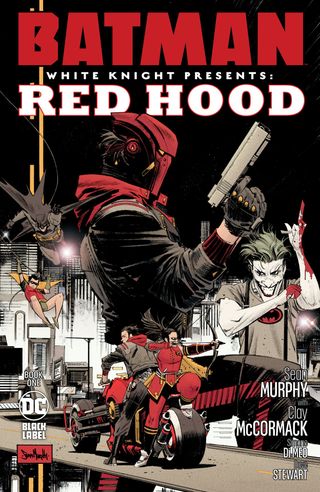
Grant DeArmitt for Newsarama: Sean, there are a lot of reasons to be excited about this book, and one of the most popular is that you're introducing a new Robin. That's a character by the name of Gan, who we know is a Mongolian immigrant and Gotham City teen. But what don't we know, yet, about this new Robin?
Clay McCormack: Well, she's a Batman and Robin superfan. She's very smart, and her attention to detail helps her figure out that there might be some connection between Jason and Batman. She sees that as something to explore.
Also, she's doing this all on her own. She's very homemade, you know, she's got a black and yellow towel wrapped around her neck as a cape. She's riding around on a ten-speed bike. When she discovers that there's a Robin she has direct access to, it gets her very excited about possibly getting more tools to help defend her little corner of the city.
Sean Murphy: I'm excited for Gan cosplay to pop up sometime in our future.
Comic deals, prizes and latest news
Get the best comic news, insights, opinions, analysis and more!
McCormack: Absolutely.
Nrama: I'm sure there will be.
Sean, you did an interview with DC's website in which you said you wanted to "reinvent Jason [...] while also honoring what made him so compelling for readers…" What is it that makes Red Hood so compelling? And how do you walk that line between making your own version and respecting the original?
Murphy: It's funny; I didn't really know much about him when I first put him in the book. In Volume One, I put his name on a gravestone. Then, I had some throwaway dialogue that, though it didn't really register to me, makes him Robin number one. And when Clay got the script and read over it, he goes, ‘Oh, you're switching Robin orders. That's interesting.' And then he tells me, ‘Well, Dick talks about another Robin that was there before him, so obviously that means he's the second Robin. And that's a big deal.'
I could either change it or go with it, and like an idiot, I decided, ‘Who cares about changing it? I'm just going to keep going. We'll fix this some other time.' So here we are, five years later, trying to fix it.
But the response I get is mostly positive. I think a lot of people were confused, too, which is totally fine as well. I was stunned by all the people that just wanted to know what happened to Jason in this universe. So as I finished Volume One, I threw some more Jason scenes in there. It turns out he wasn't dead; he was alive and he never told Bruce the truth because he wanted to hurt him.
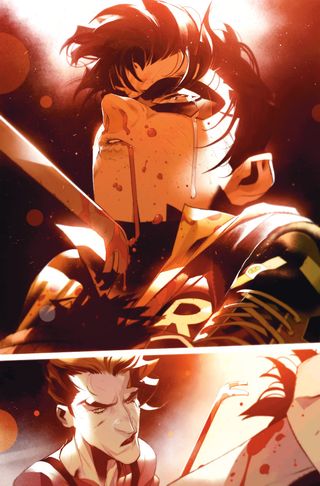
I never really thought about how it would work from there, but as I moved forward the last four years, and Clay has been helping me, I've noticed how Jason keeps popping up in my universe. So we really wanted to address it in a real way, address the lost chapter of Jason. Clay drove in and did a lot of the research, he figured out Jason's beginning as Robin and how to make our version a little bit different. He's still the angry Robin, but we asked, ‘What if he's a little bit older now? What if he got some distance from Bruce? And what if the way he got some distance was by training his own Robin?
He's emphasizing with Bruce too because you can't hold onto a grudge forever. The interesting thing about the way Clay wrote him is that he's matured beyond the Red Hood people know.
Nrama: Understood. Since we're on the subject of familiar characters, I wanted to talk about introducing a Batman Beyond villain to the White Knight universe. That is Shriek, AKA Walter Shreeve. Is he pretty much the same character as he was in the show?
McCormack: Yes and no. We don't really get much into his background. Honestly, I would say no, because he doesn't have a direct connection to Derek Powers at this point. At least, not that we know of in this book. He's an already established villain who is working in Gotham City. We don't really get into his backstory at all, actually.
In our book, the interaction that happens between him and Gan and Jason is that Shreeve is just trying to live his life. The section of town that he lives in happens to be the same section that Gan lives in, and he's just trying to fly below the radar; he doesn't do any villainous stuff there. But being the superfan that she is, Gan recognizes this guy and blows his cover. We get to see how he reacts to that, and see him go from trying to decide which ketchup to buy at the grocery store when we meet him to getting confronted at the end in full Shriek-armor glory.
Nrama: So he's one of the Batman villains that's more like a hired thug than a mastermind? Just a guy trying to live his life through crime.
McCormack: Yeah, he's a blue-collar Batman villain.
Murphy: It's funny that you're saying he was at the grocery store buying ketchup. It made me think about how we almost used Condiment King as the villain for this book.
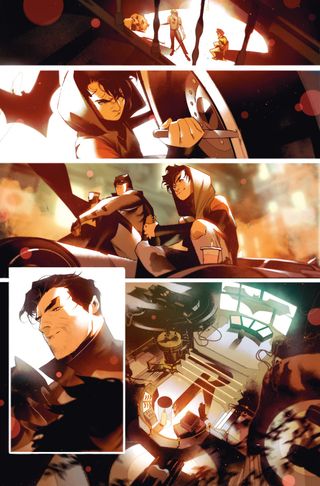
Nrama: Wait, what?
Murphy: Yeah, I can't remember why we ruled that out.
Nrama: I need to know more.
McCormack: The villain we were looking for for this book needed to be someone dangerous, but not so big that they would take all the oxygen out of the room. We didn't want to use Deathstroke or somebody like that. So we were looking at the mid-range villains, and Sean and I both love Condiment King, but he was not quite dangerous enough to be believable. We needed someone who was not quite the Joker but was a little more intense.
I don't know if it made it into the final book, but we actually did have a scene where Gan punches out the Condiment King. That might have wound up on the cutting room floor though.
Nrama: That is wild.
Murphy: But now that scene in the grocery store, I want to see that with Condiment King.
McCormack: Yeah, we really missed our opportunity there.
Nrama: I'm telling you, there's a Condiment King Revolution coming. He's the bartender in Leomacs's and Josh Williamson's Rogues. He shows up in the first issue.
McCormack: No kidding? Yeah, he's going to get the Kite Man treatment pretty soon, I think.
Nrama: They're still looking for a villain for the next Matt Reeves movie.
McCormack: [laughs] I don't know if he matches that style?
Nrama: You never know!
McCormack: Actually, I would love to see Condiment King with a BDSM mask duct-taped around his face. That would be great ...
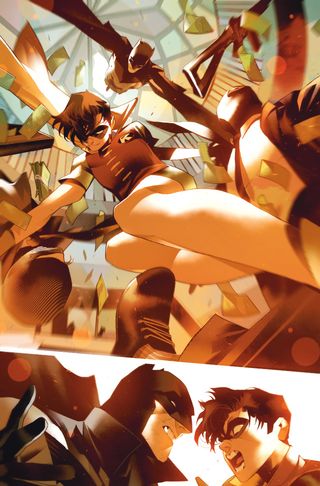
Murphy: ... with a bunch of incels who love ketchup and mustard as much as him? Like a bunch of disenfranchised food salesmen or whatever.
McCormack: Literally disenfranchised, because they lost all their fast food franchises… Our book is better than this, I swear!
Nrama: Oh, we know. Not that there's anything wrong with Condiment King. So Sean, I wanted to ask: this is a book you're not drawing. Is there a difference in your creative process when you're not drawing a book?
Murphy: I try to let artists do their own thing. I'm not the type of creative who lords over my own universe and needs to put my fingerprints on everything. I'm very much hands-off. I tell people what I'm looking for and then let them run with it. As it's 90% in the ballpark of what I want, I'm happy.
One of the rules I have when I work with other writers is that I don't want voiceovers. I don't want narration boxes. I just want to take an approach where all of the dialogue is just dialogue. You know, the only voice-over you have is when a character is talking. I find it that keeps the story moving a lot faster. It keeps the tension up in a lot of ways rather than having omniscient voices talking about whatever. Other than that, you can do whatever you want. You can kill characters if you want to.
Nrama: What do you two think Simone de Meo brings to this book? Why is his stuff working for it?
Murphy: Emo hair! He is really good at emo hair.
Nrama: Hell yeah.
McCormack: He's got a really great energetic style. I would say it's different from anything you've seen in the White Knight universe so far, but it doesn't feel out of place. He has a lot of the same sensibilities, even though he does things a little bit differently stylistically, as far as where he places the camera for shots and character position and stuff like that.
Since we have Shriek as our villain, who has a power set that's not exactly suited for print media, we figured Simone would have a great take on how to visualize it. He is so good at handling special effects. He works on computers, so he has wiggle room with that stuff that Sean doesn't or that I don't. I think it's going to be very cool. He has some really nice fight scenes in there too, he makes a German suplex look like it really hurts. So that's a plus.
Nrama: In that same vein, let's talk about Dave Stewart, who has been the colorist for the White Knight universe since Batman: White Knight Presents Harley Quinn. What does Stuart bring to this book that you're most excited about?
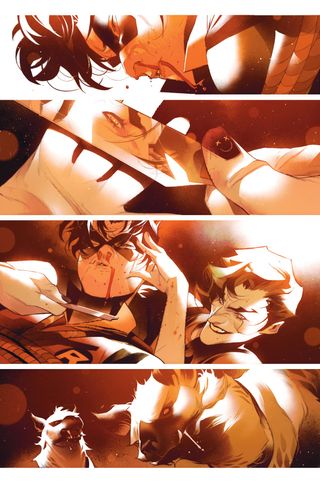
Murphy: Yeah, Dave took over for Matt Hollingsworth on Curse of the White Knight, so this will be his second title. Dave and I go way back to the days when I used to draw Hellblazer and Joe the Barbarian and stuff like that. He's part of the team, and he's one of the greats just like Matt.
One of the other things about the White Knight universe is that we don't go crazy with colors. We try to keep it to one or two-color palettes. A lot of comics look like explosions at a Skittles factory. There are just so many pops of characters in colors that it's hard to keep it unified. I try to keep it as a unified palette and Dave gets that. He has more of a European approach to coloring anyway, so that really fits the aesthetic as well.
McCormack: It's really exciting for me because this is my first published work with DC, and if you look at the credits list on that front cover, it's a pretty great first outing, as far as [who my fellow creators are]. [I had] a lot of support from some really great names.
Nrama: Oh it's a knockout team. I've only seen the preview pages but already [the comic] stands out so well visually. Real quick before we move along, Sean, what do you mean by 'European approach?'
Murphy: European colorists usually go with two-color palettes; they'll use orange or purple and yellow in there. Maybe they'll use three colors, but they won't use all the colors. They really will try to limit their scope.
If you watch movies, they seem like they have every color in there, but most movies are generally working with two to three colors. American Comics go crazy with color, but I tend to gravitate more towards limited palettes. I think Clay likes the same.
McCormack: Definitely.
Nrama: Gotcha. Now Clay, since this is your first DC book like you said, I know you're excited about a lot of things. In that interview I mentioned earlier, you said you were excited to help shape the White Knight universe. In what ways does Red Hood do that?
McCormack: We're answering one of the most interesting questions that Sean has put on the table, which is, ‘What happened to Jason Todd after he escaped the Joker?'
Jason's involvement in the universe started off as kind of a small, character-motivation thing for Batman, but as he kept popping up, his story ended up becoming central to a lot of the main characters. What happened to Jason affects Dick, it affects Harley, it affects the Joker and, of course, it affects Batman. But we don't know how it affects Jason.
Getting to bridge the gap between the Robin with a bloody face we see in Curse of the White Knight to the more confident, adult, prison guard version of him that shows up in Beyond the White Knight is really exciting because there's a whole bunch of room to play around and define his character in a way that maybe people aren't used to. It's a really central part of the universe that has not been explored yet, so it was very exciting to flesh that out.
Nrama: Sean, the last time you and I talked about White Knight, we touched on the Red Hood and you said that part of this story is Jason empathizing with Bruce because he takes on the mentor role. By the end of this comic, how will Jason feel about Bruce?
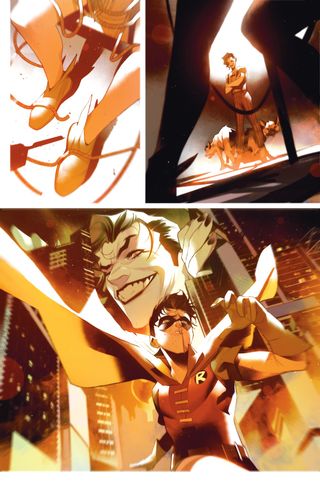
Murphy: That will be answered in two ways. Clay's miniseries will have an answer to that, and Jason is going to be set up for the finale in[Beyond the White Knight] as well.
After that, I'm not really sure what to do with him. One of my instincts is, well, Bruce doesn't want to be Batman anymore, but he decides that the city needs Batman, so maybe Jason should take over? But that seems like it would backtrack Jason. You know, ‘You're the first Robin in this universe, the mantle is yours if you want.' But Jason has worked really hard to get away from that, so it seems like Jason might bow out and give it to Dick or something.
I'll have to talk with Clay about what he thinks works for the character the most. We haven't really decided what to do with the end of Jason yet.
McCormack: I think by the end of our book, you'll see how Jason has started working on his hangups with Bruce. But I wouldn't say that he is out of the woods with that stuff yet by any stretch of the imagination. It's a work in progress, and all through Beyond the White Knight you see that he's not really sure.
Murphy: We also have Terry [McGinnis], who has inherited the Batman Beyond suit, so it moves the chess pieces around a lot. The youngest member of the team now has got the most powerful suit; how is that going to work? Is he going to be Batman? Is he going to give it to Dick? So there are a lot of placements that we are all looking at that we're still looking at and we're not sure how it's all going to work out yet.
Nrama: Last question for the both of you. So far, we've got the saga of the White Knight and then a couple of spinoffs; Von Freeze, Harley Quinn, and now Red Hood. Who else in this world deserves the spinoff treatment? And you can't say Condiment King.
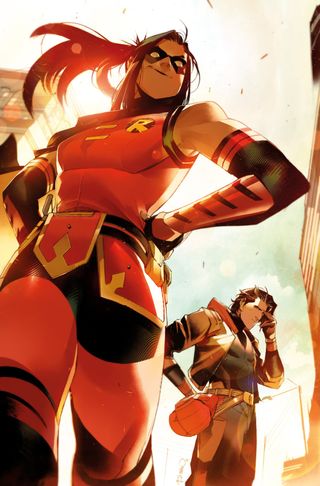
McCormack: Who are the two other villains that hang out with Condiment King in that one [Batman: The Animated Series] episode? One is a giant rat.
Murphy: Clay is going to want to do Catwoman. Right, Clay?
McCormack: Catwoman stands out to me because she doesn't at this point has not really been mentioned in the White Knight universe. So very similar to Jason, that offers a question mark. That is, to this point, unexplored. Being where we are in the timeline, I think there's a lot of interesting history to get into. Does Selina Kyle exist? If she does, what has she been doing? That kind of thing.
I've been pushing for that for a while. I don't know if we'll ever get to do it, but it would be fun.
In the universe of the White Knight, Bruce Wayne may be old but he's still kicking. In the main DC continuity, however, Bruce is dead… sort of. Here's what that means.

Grant DeArmitt is a NYC-based writer and editor who regularly contributes bylines to Newsarama. Grant is a horror aficionado, writing about the genre for Nightmare on Film Street, and has written features, reviews, and interviews for the likes of PanelxPanel and Monkeys Fighting Robots. Grant says he probably isn't a werewolf… but you can never be too careful.
Most Popular






